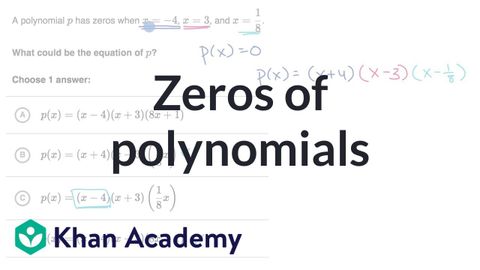
Subtitles & vocabulary
Zeros of polynomials: matching equation to zeros | Polynomial graphs | Algebra 2 | Khan Academy
00
林宜悉 posted on 2020/03/27Save
Video vocabulary
expression
US /ɪkˈsprɛʃən/
・
UK /ɪk'spreʃn/
- Noun (Countable/Uncountable)
- Act of making your thoughts and feelings known
- Group of words that have a specific meaning
A2TOEIC
More negative
US /ˈnɛɡətɪv/
・
UK /'neɡətɪv/
- Noun
- The opposite to a positive electrical charge
- In grammar, containing words such as 'no' or 'not'
- Adjective
- Being harmful, unwanted or unhelpful
- In mathematics, being less than zero
A2
More express
US /ɪkˈsprɛs/
・
UK /ɪk'spres/
- Transitive Verb
- To send something by fast mail
- To state or show what you think or how you feel
- Adjective
- Sent by a fast mail service
- Traveling at high speed
A1TOEIC
More bit
US /bɪt/
・
UK /bɪt/
- Noun
- Device put in a horse's mouth to control it
- Small piece of something
- Intransitive Verb
- (E.g. of fish) to take bait and be caught
A1
More Use Energy
Unlock All Vocabulary
Unlock pronunciation, explanations, and filters
